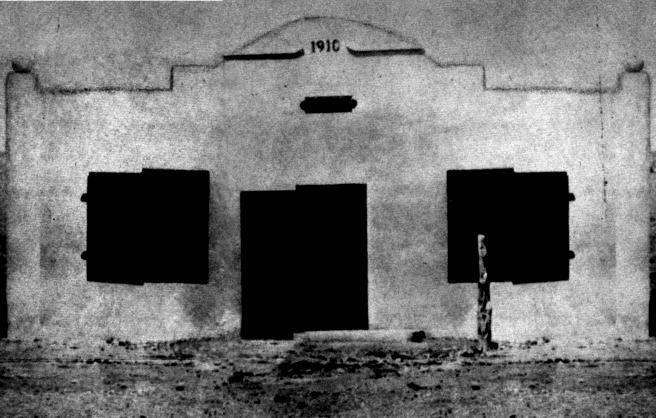|
Gleeson Jail
The Gleeson Jail is a former jail located in the ghost town of Gleeson, Arizona, Gleeson, Arizona. It was built in 1910 and restored in 2008. History Early history Gleeson was founded as a mining town in the 1870s and quickly transformed into a usual American Frontier, frontier settlement, filled with rowdy miners and cowboys. The town jail, however, wasn't built until after the turn of the century. Before the jail was constructed, the constable of Gleeson chained his prisoners up to the "jail tree", a large oak located in a nearby wash with a metal cable wrapped around it. The prisoner's right hand would be attached to the cable and he would remain there for however long, rain or shine. When it rained, water would fill up the wash and "''clean out the jail.''" Perhaps the most famous Sheriff, lawman to serve as Gleeson's constable was Deputy Sheriff, Deputy Wesley Wooten Cates. Born in Texas, at the age of sixteen Cates joined the Texas Rangers Division, Texas Rangers and served ... [...More Info...] [...Related Items...] OR: [Wikipedia] [Google] [Baidu] |
Gleeson, Arizona
Gleeson is a ghost town situated in southeastern Cochise County, Arizona, United States. It has an estimated elevation of above sea level. The town was first settled as Turquoise in the 1870s in what was then the Arizona Territory, then later re-established as Gleeson in 1900. History The area was initially settled as a mining camp called Turquoise after the mineral which had been mined by Native Americans in the area. The Turquoise post office was established on October 22, 1890, and lasted only a few years until September 17, 1894. When local miner John Gleeson registered a copper claim and opened the Copper Belle Mine, the town of Gleeson was created just downhill from the old site of Turquoise. Silver Bill, Pejon and Defiance were some of the other mines that followed in the surrounding areas. The Gleeson post office, established on October 15, 1900, supported a town of about 500 people engaged primarily in copper mining, including veins of lead, silver and zinc. In 1912, ... [...More Info...] [...Related Items...] OR: [Wikipedia] [Google] [Baidu] |
